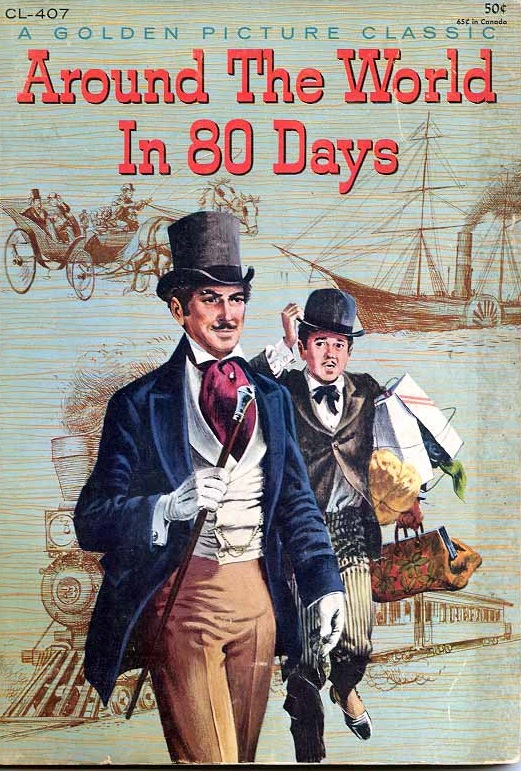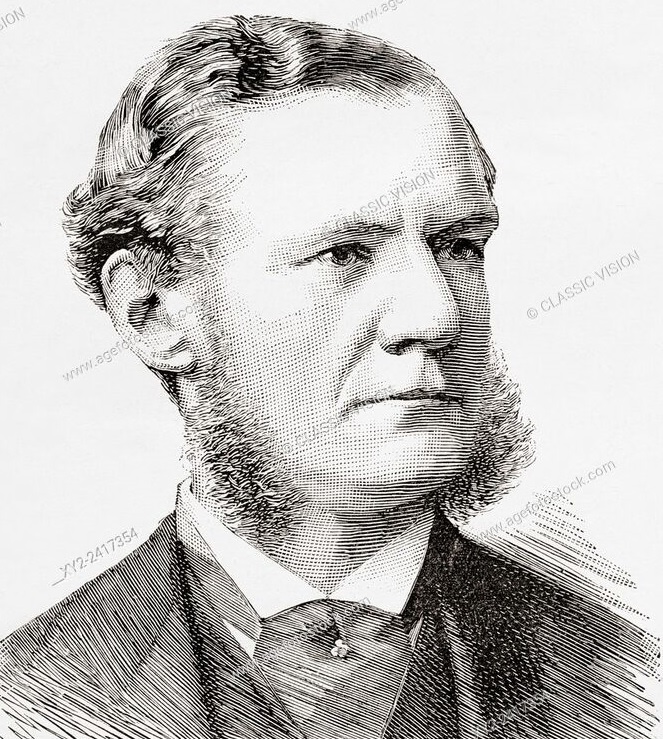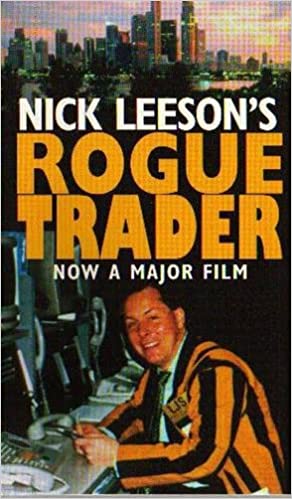
(Note: A much shorter version of this article appeared in Mint dated 13 July 2020. You can read it here.)
In 1872, when Phileas Fogg, Jules Verne’s enigmatic character, wagered with his whist partners at the Reform Club, including an Assistant Governor of the Bank of England, to travel round the world in eighty days, he issued a cheque for £20,000, drawn on Baring Brothers. That was security enough. That was the standing of Baring Brothers, which always paid his cheques “on sight and his account remained invariably in the black.” Moreover, he was accepted as a member of that distinguished society on the recommendation of Baring Brothers with whom he had an unlimited overdraft limit.
One significant milestone that went past recently, largely unnoticed in the midst of the Covid-19 pandemic, was the 25th anniversary of the Collapse of Barings. That is an equally riveting story of how Nick Leeson, a 28-year old star trader based in faraway Singapore brought down a venerable 232-year old British institution. Losses of around £830 million, on account of one trader’s unauthorised and concealed trading activities, far exceeded the bank’s capital. Barings was Britain’s oldest merchant bank, and banker to royalty for generations. Established in 1762, by the 19th century it was considered one of the six big powers of Europe, apart from England, France, Prussia, Austria, and Russia. It had financed the 1803 purchase of Louisiana from France, doubling the territory of the United States in what is touted as the biggest real estate deal in history. The Barings family also could boast of five separate hereditary peerages. By 1995, the Group had about a hundred subsidiaries, including the Singapore subsidiary where Leeson was working.
How could one trader in faraway Singapore bring down such a big bank? What he was supposed to be doing and what he was actually doing were different. He was only authorised to do low risk arbitrage between the Singapore International Monetary Exchange (SIMEX, since merged) and the Osaka Exchange. Low-risk arbitrage should have generated only low levels of profit. But, Leeson was actually engaged in more risky positions.
Leeson’s strategy of straddle, simultaneously selling put and call options on the same underlying, was primarily a bet on the stability of the underlying Nikkei-225 index. After the Kobe earthquake, the Nikkei-225 index dropped sharply resulting in huge losses. Leeson started doubling his losses and incurring further losses.
As General Manager in the Singapore subsidiary, Leeson was in charge of both trading and back office desks. This enabled him to cover up losses for over a year. Non-segregation of front and back offices is a basic risk management requirement that even India had put in place way back in 1980 following a major fraud in forex dealing. Even though audit had observed that these be segregated, the powers remained concentrated in Leeson.

The incentive structure had an inherent asymmetry creating a bias towards risk taking. Thus, Leeson was being paid bonus, expecting another £450,000 for 1994, for the huge profits that he was generating. But, he did not have to take a share in the losses. Considering that large profits can come only from putting the bank at greater risks, the incentives were towards putting the bank at risk.
Managerial confusion and poor monitoring of Leeson’s activities also contributed to the collapse. In the bank’s complex matrix organisation, he was reporting to both London and Tokyo, the former for proprietary and the latter for customer transactions.
Conflict of interest in the organizational structure was not the only reason for poor internal checks and balances. The system allowed Leeson to create an error account, 88888, which was used to hide losses. Fictitious transactions, falsified reports, and fraudulent accounting entries were also used to cover up the losses. He also violated internal guidelines on overnight positions. Auditors’ questions were ignored or brushed aside. Warning signals were not acted upon as different departments were acting in silos.
The rot started at the top. Peter Baring, the Chairman of Barings, famously declared that he did not understand derivatives which contributed a significant part of the group’s profits. This lack of understanding extended to even not knowing that huge profits can come only from high risks. As long as the directors were getting bonuses upward of £1 million, they preferred not to raise any pertinent question.
The collapse was also the result of not taking regulators seriously. SIMEX had raised concerns about Leeson’s activities, while at the same time asking for additional margins on adverse futures positions, sometimes going up to £300 million . The letters from SIMEX were given to Leeson himself to reply. The additional margins were being paid with funds transferred from London, which did not probe why such huge funds were required for a low risk activity. The justification that these were to fund credit business was not cross-checked with the credit function.
In banking history, and even in that of central banking, Barings has a permanent place. In 1890, the bank had faced huge losses in its lending in Argentina, resulting in what came to be known as the Baring Crisis. As Kynaston notes in his 2017 history of the Bank of England:
“In an unsurprisingly strained atmosphere, the governor, who had probably only discovered that day that Barings was in such dire, life-or-death straits, contented himself with observing that he needed further particulars and would wait until Monday to see whether Barings could continue. Already, though, he must have begun to see that the consequences of Barings going down were almost unthinkable: not only would the collapse of the City’s leading accepting house (that is, merchant bank), the world leader in trade finance, inevitably bring down an array of other firms, including all the discount houses, but the very status of the bill on London would be endangered and thus the pre-eminence of the City as an international financial centre.”
David Kynaston, “Till Time’s Last Sand: A History of the Bank of England 1694-2013, Bloomsbury, 2017

Governor William Lidderdale could successfully arrange for a rescue after coordinating with various other banks. This episode sealed the Bank’s position as a central bank, one to which other banks could go to in times of crises, and the Bank would go to great lengths to save the institution, in the interest of stability of the financial system. It also was the first instance that criticism rose (predictably, from The Economist) of a bad precedent. Even though the terms “moral hazard” and “too big to fail” were not in currency in those days, they summed up the critique.

In December 1995, Leeson was sentenced to six and a half years to be served in Changi Prison. He was released in 1999 after being diagnosed with cancer. Leeson is now a free bird authoring books, the first of which, Rogue Trader, was written while still in prison and made into a movie starring Ewan McGregor in the title role. He is also on the lecture circuit, his official website announcing that “Nick is available for both conference and after dinner speaking, covering themes such as risk, conduct, compliance, corporate governance, company culture, stress, mental health and wellbeing.”
Barings has passed into banking folklore and is also a landmark case in history of banking supervision. But, were the lessons from Barings ever learnt? The Basel Committee on Banking Supervision came up a few months later with a consultative paper on supervision of financial conglomerates. In 1996, it revised the standards for Supervision of Cross-Border Banking and amended the capital accord to include capital for market risk. In 1997, it brought out the first version of the Core Principles for Effective Banking Supervision, which has since been revised twice. In 1998, it prepared a framework for Internal Control Systems. It also included a new focus on operational risk while doing a thorough revision of the capital framework, the first Consultative Paper on Basel-II coming out in 1999.
Notwithstanding these comprehensive initiatives, some key lessons remain unlearnt, resulting in the global financial crisis of 2007-09. Newer risks arising from complex financial products and increasing global interconnectedness emerged or became stronger, while many older risks such as high leverage became more pronounced and remained unaddressed or ignored. Bankers continued to deal in complex products of which top management remained clueless. The asymmetry in risk which was at a trader level got scaled up more emphatically to the bank- and on a global level, where the bankers share in profit, while losses are left to the taxpayers of the home country to pick up. Cultural conflicts involved in hasty takeovers are at the root of huge penalties on HSBC and the more recent cases of Danske Bank and Swedbank for noncompliance with Anti-Money Laundering regulation. Risks posed by employee incentives continue to put banks at greater risks, notwithstanding new standards dealing with employee compensation, as seen in the case of Wells Fargo.
Today, Phileas Fogg might be able to travel round the world in just one day. But, if he were to give a bank cheque as security, it could raise a few eyebrows at the Reform Club. No one knew where he was from or where he made his fortune. Even Baring Brothers had done no KYC on him. Moreover, one day is today a long time in banking.
A shorter version of this article appeared in Mint dated 13 July 2020. You can read it here.
© G Sreekumar 2021
For periodical updates on all my blog posts, subscribe for free at the link below:
https://gsreekumar.substack.com/
![]()